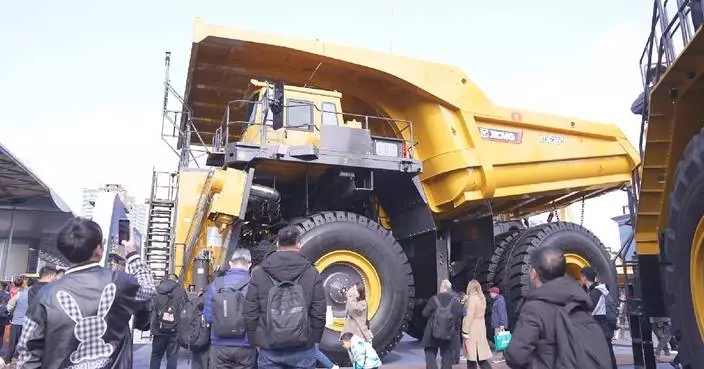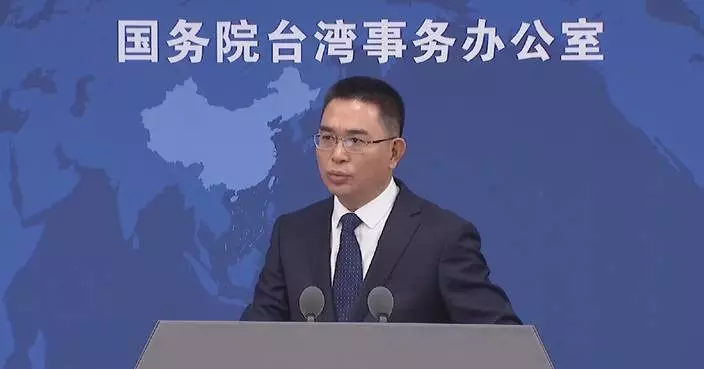A supermoon was seen over Mohe City of northeast China's Heilongjiang Province on Monday night, luring photography enthusiasts from all over the country.
In downtown Mohe, the supermoon began to rise at 19:00 on the day. It appeared extraordinarily huge at first, glowing with a reddish light.
"Today's moon was just like as it came out of a painting or a dream. It was so shocking to encounter such a beautiful moon. In more than 30 years, I have never seen such a beautiful moon. Especially when the moon just came out today, it was big and red. This is basically something we can hardly see in the city. I am very, very lucky to see this beautiful moon today," said Zhaoqian, a visitor form east China's Shandong Province.
As just in the peak season of local tourism, visitors flocked to the Polar Star Square, the highest point in Mohe City, trying to capture this rare and unique beauty with their cameras.
A supermoon is a full moon or a new moon that nearly coincides with perigee, the closest that the Moon comes to the Earth in its elliptic orbit, resulting in a slightly larger-than-usual apparent size of the lunar disk as viewed from Earth.

Supermoon lights up sky of northeast China

Supermoon lights up sky of northeast China

Supermoon lights up sky of northeast China

Supermoon lights up sky of northeast China
Director and screenwriter Shao Yihui Monday shared experiences behind the scenes and sincerely appreciated the audience's encouragement and recognition for Her Story, the new Chinese comedy film which earned rave reviews by telling authentic stories from a largely female perspective.
Her Story unfolds around the life and growth of the fiercely independent single mom Wang Tiemei and her new neighbor Xiao Ye, the "romantic fool". They are completely different in personality yet accompany each other through various relationship challenges. The movie breaks away from the conventional romance or self-help narration and stands out from the rest of the genre by bringing out exquisite, multidimensional portrayal of women via sharp, humorous lines.
Its broad and thrilling resonance partly attributes to location shooting. Shao made big efforts in finding and negotiating for perfect real-life sites.
"I think the architectural style of Shanghai decides the unique lifestyle there. Like many modern tenants in those old villas, they share some activity space and have close ties with their neighbors," Shao said.
Shao devoted the same strictness and responsibility to the casting process. Wang Tiemei is designed to be a warm, positive and chill single mom. And Chinese actress Song Jia popped up into her mind when she was still writing the script.
"She's a perfect match. She is refreshing and elegant in daily life. Although she later told me that she was a bit worried during acting because she was used to portraying roles that are quite different from her own. When the role is very similar to herself, she felt unsure," said Shao.
And she chose Chinese actress Elaine Zhong Chuxi to be the moon-struck but rational Xiao Ye because she saw their similarities.
"I did not know her very well at the beginning. Her past TV shows gave me an independent and mature impression. And she has a bright and beautiful face. But after chatting with her, I found that she's kind and delicate, considerate to the mood of others, bearing some resemblance to Xiao Ye. So I hope to dig out and display that part of her, in contrast to her past," Shao said.
So far, Her Story is rated at 9.1 out of 10 points on Douban, China's leading film-rating platform. Over 140,000 audience have commented on the movie.
While some have compared Her Story to a Chinese counterpart to Barbie, a 2023 global hit from Warner Bros., for its whimsical yet incisive tone, many argue that it presents a distinctly Chinese perspective on gender issues.
Shao remains modest about her great success.
"I know there is still room for improvement, but the audience have been tolerant to us. I think it's because my movie delivers something different from others, showing some novelty, so people like it. That makes up for our shortcomings. I think there's also good luck in the movie's success," Shao said.
Her Story is set to hit the big screens in the United States, Australia, New Zealand and other countries and regions on Wednesday.

Director shares behind-the-scenes stories of hot film Her Story













